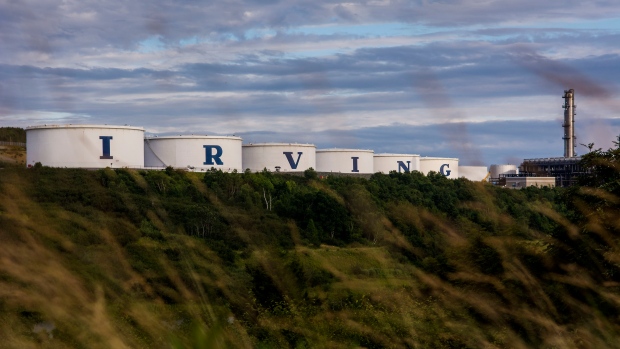Aug 10, 2018
How the Saudi-Canada feud forces billionaire Irvings to reconsider oil options

Energy East is not the only way for Canada to end its reliance on Saudi Arabian crude oil.
While the $15-billion plan to pipe over one million barrels of Alberta oil sands crude to refineries in eastern Canada every day died last year, the escalating diplomatic crisis between Canada and Saudi Arabia has respawned the debate over where Canada gets its oil.
Barely a tenth of Canada’s total crude imports came from Saudi Arabia last year, but according to the National Energy Board’s first-ever Canadian Refinery Overview published in April 2018, the Saudis provided nearly 40 per cent of Atlantic Canada’s crude oil supplies last year. While the Saudi government has stressed oil flows will not be disrupted by the dispute, the Kingdom’s push to sell off its Canadian investments suggests Canada’s counterpart isn’t afraid to escalate.
“In terms of the amount of Saudi crude going to the Irving refinery, it is pretty significant,” Colette Craig, a market analyst at the NEB and lead author of the refinery overview, told BNN Bloomberg via telephone. She was referring to Canada’s largest refinery, the Saint John, New Brunswick-based 300,000 barrel-per-day facility owned by Canada’s Irving family and the primary gasoline supplier for the maritime region.
“I’m pretty sure [Irving is] monitoring the situation,” Craig said.
Asked whether Irving was considering alternative sources to Saudi crude, company representatives did not respond to multiple requests from BNN Bloomberg. The billionaire Irving family, which controls a vast business empire in eastern Canada spanning the energy and shipbuilding industries, has long avoided the media spotlight.
“Whatever exports Saudi Arabia cuts from Canada will likely be directed to other import markets, which in turn will free up supply on the part of some other country to be able to export to Canada,” Michael Ervin, a refining industry veteran, told BNN Bloomberg in a telephone interview prior to the Saudi government’s assurances that oil shipments will continue.
“It would not be difficult at all” for Irving to replace its Saudi Arabian supplies, Ervin said.
- Canada-Saudi conflict won’t ‘preclude’ Aramco IPO talks: TMX CEO
- Morneau: Ottawa not considering retaliation against Saudis
RELATED
Not all crude oils are the same – ranging from the extremely “light” (read: lower sulfur content) grades in Texas to the heavier, more sulfuric bitumen extracted from the oil sands of northern Alberta – meaning Irving would need to replace its Saudi supplies with a similar grade of crude. Richard Masson, former head of the Alberta Petroleum Marketing Commission and current executive fellow at the University of Calgary’s School of Public Policy, believes that can be achieved through a process known as blending.
“Irving might be able to take some light crude from the U.S. Gulf Coast, but then also rail some medium crude from Alberta to get the quality similar to the Saudi crude,” Masson explained to BNN Bloomberg via telephone. “That happens quite commonly for refineries; in fact, there are many companies whose only business is to buy different grades of crude and blending them together to fit individual refineries’ needs.”
Finding different crude to swap out supplies from Saudi Arabia is clearly possible, though not necessarily profitable.
“This sort of government interference from the Saudis is going to make the Irving refinery less profitable,” Masson said. “I don’t think they will have any trouble finding replacement oil to the Saudi oil, but it will likely be more costly for them to source.”
Reviving the Energy East pipeline, proponents have long argued, would help address a variety of issues, profitability of eastern Canadian refineries being chief among them. Short of bringing a dead project back to life, however, Irving has no shortage of alternatives available.
“Where they are located on the Atlantic Coast, they have many options,” the NEB’s Craig said. “It is not like they are land-locked in Alberta. They are very well suited and located to bringing in different crudes from all over the world.”





